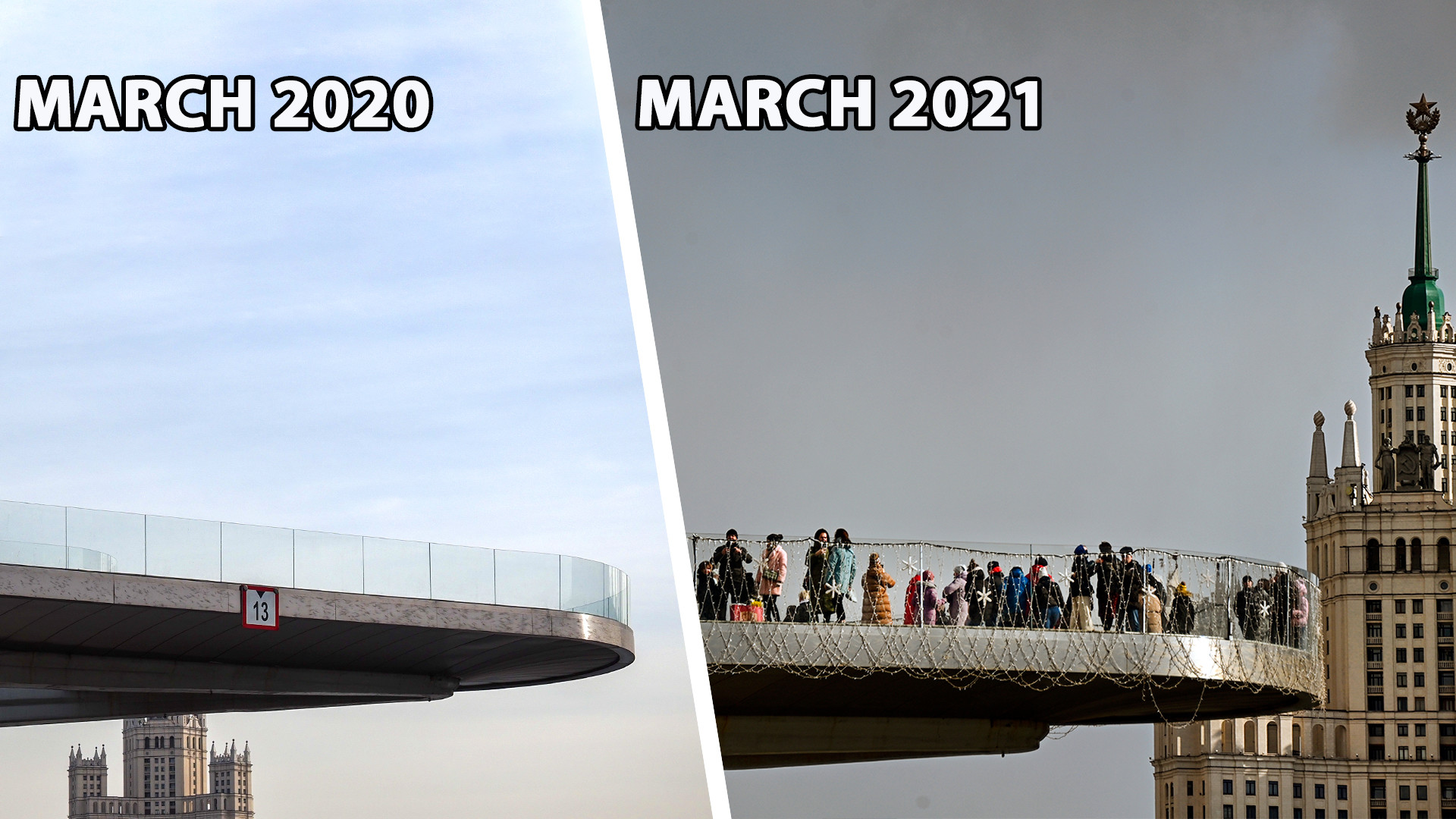
The famous Zaradye park in Moscow, one year after.
Yevgeny Odinokov; Vladimir Pesnya/SputnikAt the end of March 2020, due to the coronavirus pandemic, most Russian regions imposed a “self-isolation” regime. For several months, people were forced to stay home, leaving only to buy “essential” food and medicine. A year later, the regime has been mostly eased and many free vaccination sites have been opened throughout the country. However, people still have to observe some restrictions.

The central Grozny, April 1, 2020, and February 17, 2021.
Elena Afonina/TASSOne year ago, the Chechen Republic closed its borders for both entry and exit. There were just several coronavirus cases in the whole region. In late June 2020, the local authorities cancelled the entry ban. Then, in January 2021, cinema and pools reopened, and in February, wearing masks and gloves in public places became recommended, not mandatory. However, seniors 65 and older still have to observe “self-isolation”. As of the end of March 2021, 11,500 coronavirus cases have been registered, with 11,200 recovered.

Left: Kremlin Street in Kazan, March 31, 2020. Right: Nowruz celebrations in Kazan, March 21, 2021.
Maxim Bogovid/Sputnik; Anadolu Agency/Getty ImagesTo leave their homes, people in Kazan had to obtain an SMS-permit with ID-number, place of “isolation” and a “valid” reason to leave. However, these permits were cancelled in mid-May 2020. Currently, rules restrict audiences in theaters and stadiums to 50 percent capacity, while cafes and restaurants must close from midnight until 6 a.m. (with only takeaway allowed). Locals must also wear masks in public places. Last March, there were about 40 COVID cases in Tatarstan. Now, there are 19,000 registered cases, with 16,000 recovered.
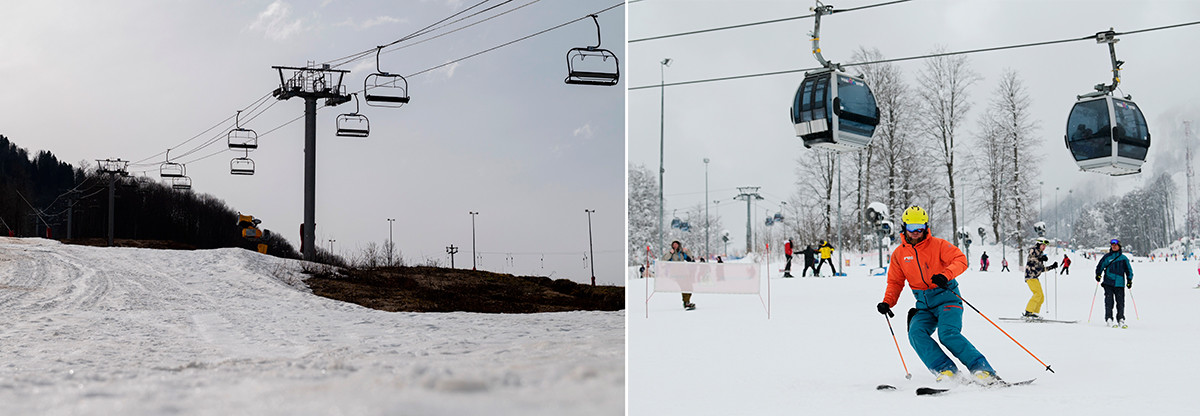
The ski resort of Krasnaya Polyana, March 28, 2020, and February 22, 2021.
Artur Lebedev/SputnikEmpty embankments, closed hotels, halted funiculars - a year ago, this usually popular Black Sea resort stopped accepting tourists. At that time, in Krasnodar Territory, there were 85 cases of coronavirus. At the end of June 2020, the beaches of Sochi became crowded again. Meanwhile, local sanatoriums are inviting Russians for rehabilitation after the coronavirus. Business and sports events are also being held again, of course, with a limited number of attendees and spectators. Currently, more than 41,000 cases of coronavirus in the Krasnodar Territory have been registered, with 36,000 recovered.
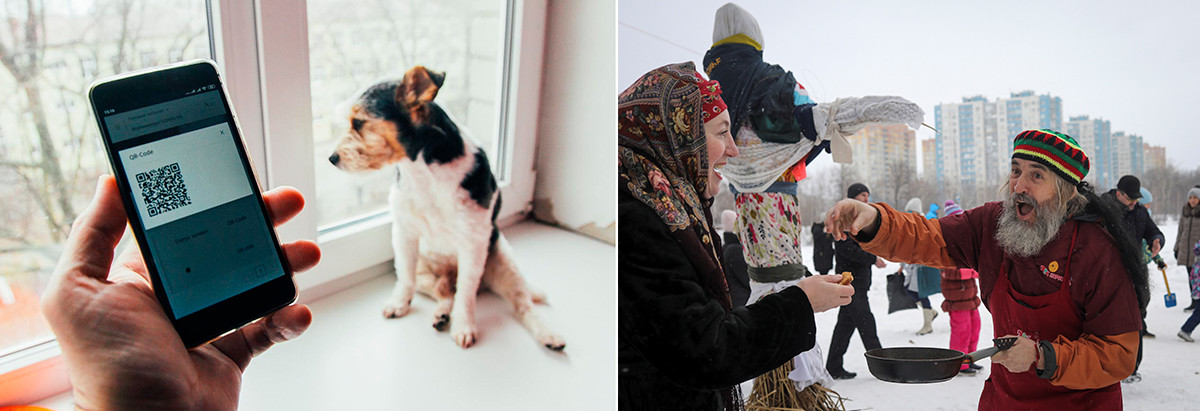
A resident of Nizhny Novgorod gets the QR-code to leave the house, April 2, 2020. Maslenitsa celebration in Nizhny Novgorod, March 2021.
Roman Vladimirov/Sputnik; REUTERSResidents of this city could only leave their home with an SMS permit: they were given 30 minutes to throw out trash and 3 hours for grocery shopping. Back then, there were 80 cases of the virus in the region. Now, 105,000 cases have been registered, with 99,000 recovered. In Nizhny Novgorod, cafe and restaurant working hours have been limited; they must close between 3 a.m. to 6 a.m. (with only takeaway available). The number of participants at public events is also still restricted. For example, there should not be more than 20 guests at a wedding ceremony.
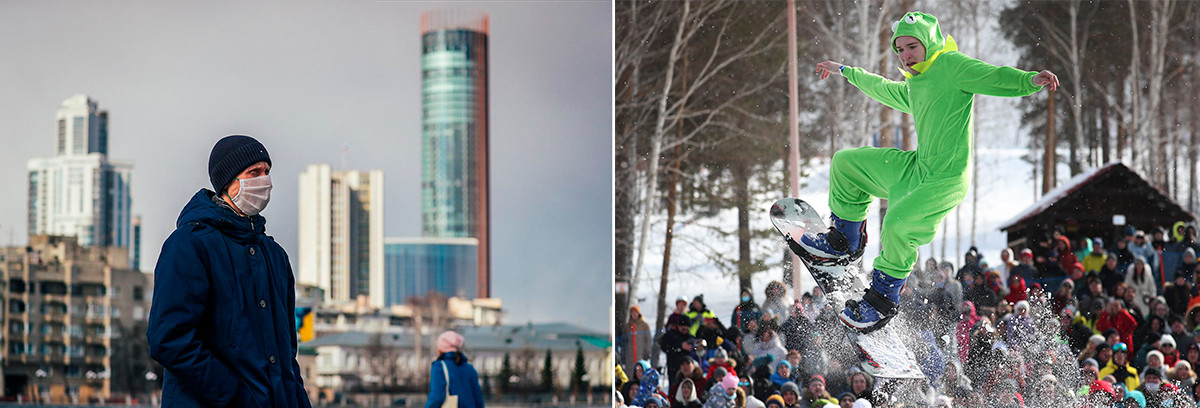
Central Yekaterinburg, April 2, 2020. Red Bull Jump and Freeze show in Yekaterinburg, March 21, 2021.
Donat Sorokin/TASSWhen the Urals capital closed its malls and parks, there were 50 cases in the region. Currently, 80,000 cases (with 73,000 recovered) have been registered. In Yekaterinburg, wearing masks remains mandatory. Nightclubs are still closed. Offices are recommended to let a third of employees to work from home.

The test flight of the drone that should observe the self-isolation regime in Vladivostok, April 3, 2020. Maslenitsa celebrations in Vladivostok, March 2021.
Dmitry Yefremov; Yuri Smityuk/TASSLeaving the house with an SMS permit and enforcement of the self-isolation regime with drones - this is how the residents of this Far Eastern city spent the first weeks with the coronavirus, despite the only 15 cases registered. However, beauty salons reopened in mid-April 2020, beaches followed at the end of May, with other restrictions gradually being lifted after that. Currently, the number of guests allowed at private events is restricted to no more than 50 people. In Maritime Territory, about 42,000 cases of coronavirus have been registered, with 38,000 recovered.

Theater Square, March 31, 2020. Students of the Institute of Fundamental Biology and Biotechnology of the Siberian Federal University, February 8, 2021.
Ilya Naimushin/SputnikSiberian students were allowed back to universities at the beginning of February 2021, but they must wear masks during lessons. Nightclubs are still closed in Krasnoyarsk, while theaters and stadiums are allowed to operate at 75% capacity. One year ago, there were 30 cases of infection in Krasnoyarsk Territory. At the end of March 2021, more than 65,000 cases had been registered, with 61,000 recovered.
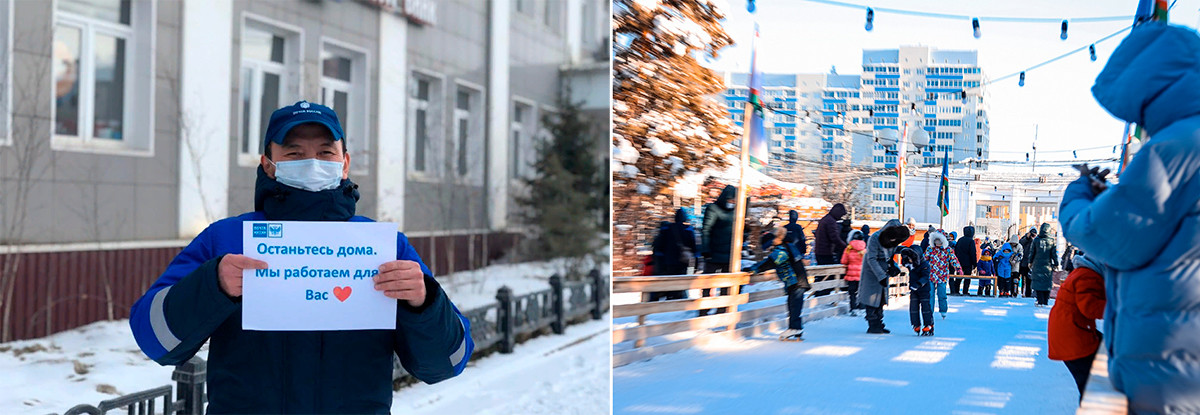
A worker of the Russian Post in Yakutsk holds a banner reads: "Stay home, we work for you.", March 2020. Locals at the park in Yakutsk, March 2021.
Russian Post; District Administration of the city of YakutskAt the end of March 2021, offices in Yakutia are still recommended to have 50% of employees work remotely. Sports events are still held without spectators, while restaurants cannot organize banquets for more than 15 guests. A year ago, there were 10 cases of coronavirus in Yakutia. Currently, about 33,000 have been registered, with 32,000 recovered.
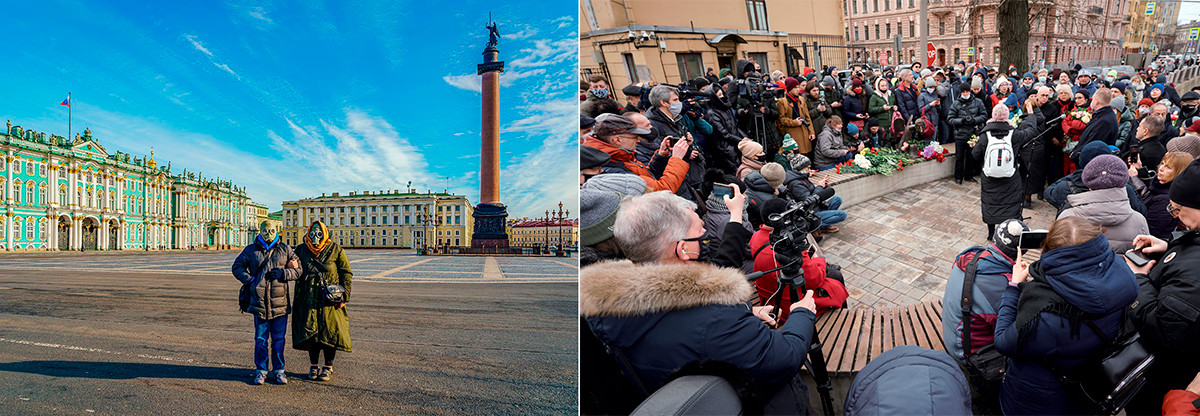
The Palace Square in St. Petersburg, early April 2020. Opening ceremony of the bronze sculpture "Sad Angel" dedicated to the health workers, March 2021,
Ruslan Shamukov; Alexey Danichev/SputnikThe most visited city in Russia looked so empty without tourists. When the “self-isolation” regime was enforced, there were about 300 cases of infection. Currently, 39,000 cases have been registered, with 37,000 recovered. Nightclubs are still closed and the number of guests at parties is restricted. Masks in gyms and beauty salons are also recommended.
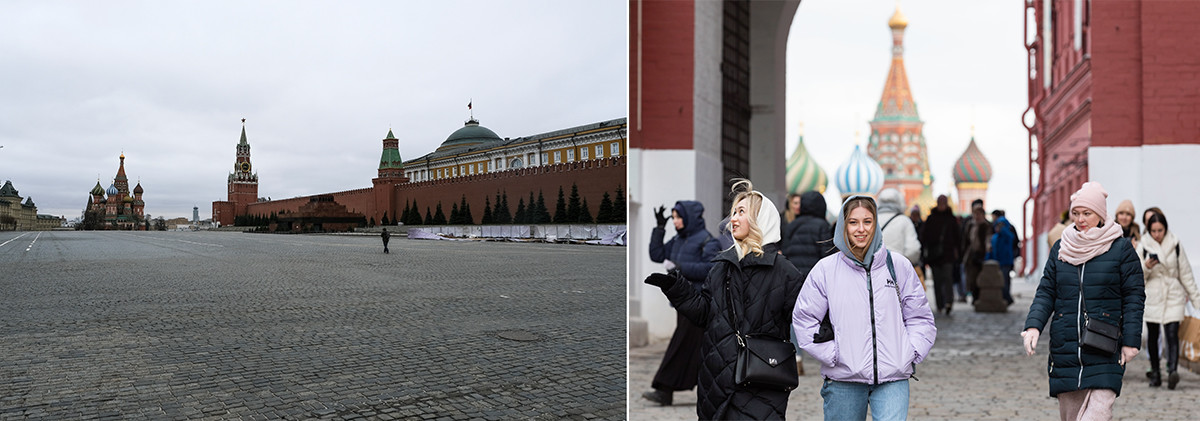
Red Square in spring 2020 and 2021.
REUTERS; Bai Xueqi/XinHuaMoscow has the highest number of coronavirus cases in the country: more than 5,000 at the end of March 2020 (out of 8,500 cases in the country) and more than 1 million by the end of March 2021 (out of more than 4.4 million in the country). A year ago, Moscow offices, schools and universities switched to an “online” mode. Everything was closed, except for grocery stores, with people desperately buying buckwheat and toilet paper. For several weeks, leaving home was possible only with a special QR permit. Restrictions began to be lifted in summer 2020. Currently, it is only mandatory to wear masks and gloves in public places and have no more than 50% in attendance at public events. In Moscow, free vaccination points are open in polyclinics, shopping malls and even in theaters.
If using any of Russia Beyond's content, partly or in full, always provide an active hyperlink to the original material.
Subscribe
to our newsletter!
Get the week's best stories straight to your inbox